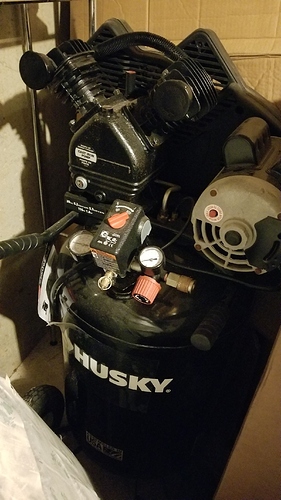Talking about Husky, I have a huskY 30 gallons
air compressor, but I use it for general daily cleaning.About your CNC, I understand you did it yourself, so:
- Did you use a specific kit design? Or
- Did you design it yourself?
- Which controller boards did you use?
- How did you calibrate it?
